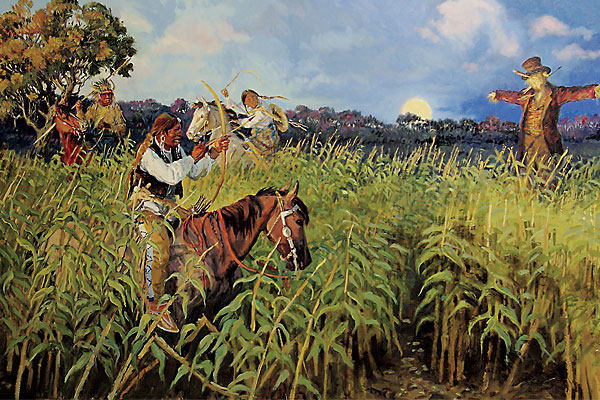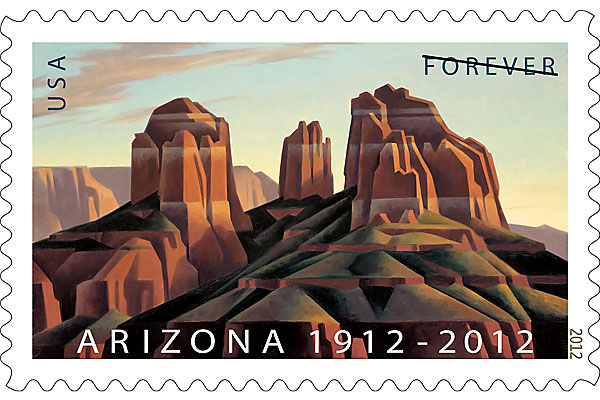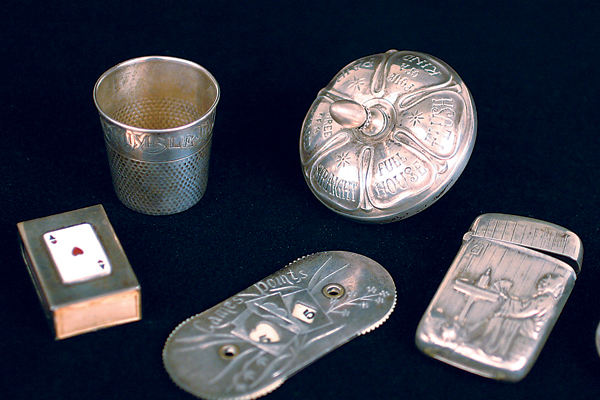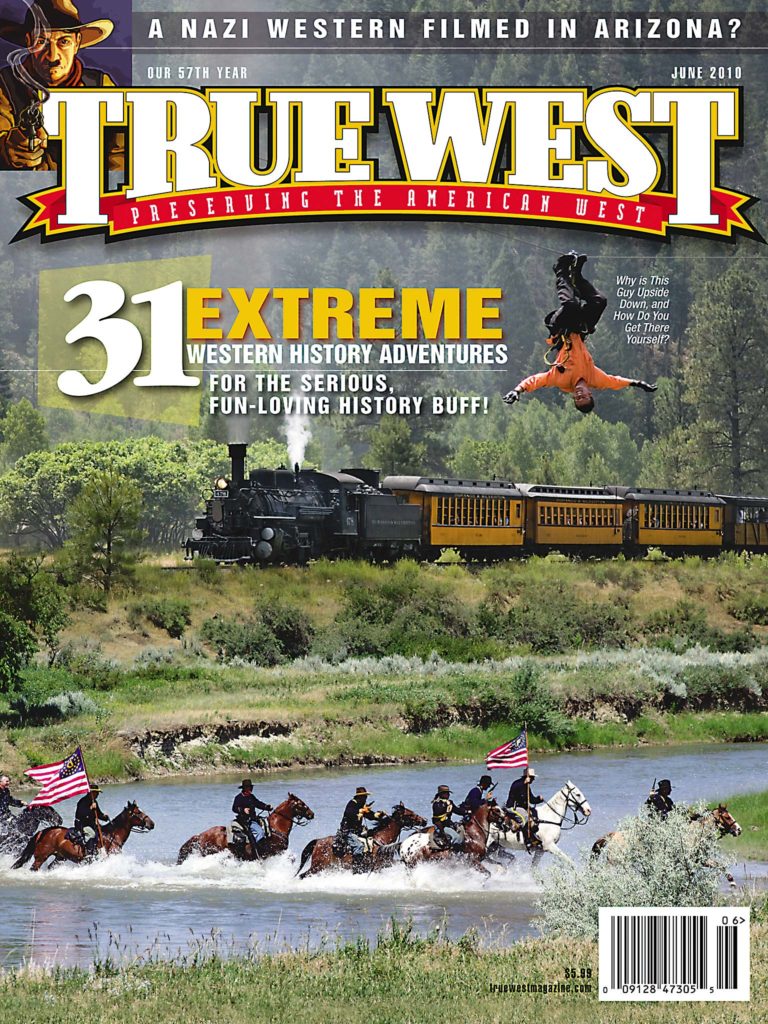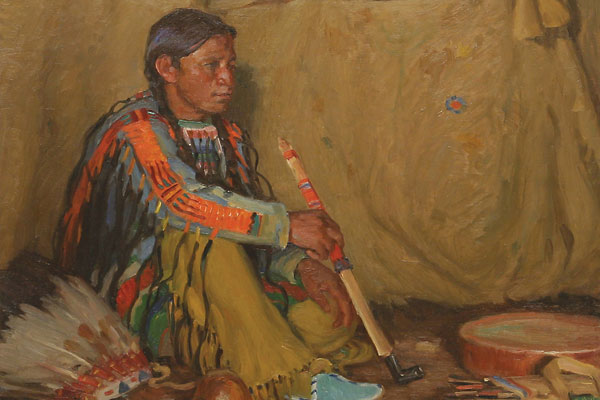
“Railway stations and hotels served in a real sense as the first “art galleries” in the West, at a time before traditional art institutions were envisioned in the region,” wrote William Gerdts in Art Across America.
The truth of his statement could not have rang truer when the hammer struck down at the C.M. Russell Art Auction (March 17-20, 2010) and at March in Montana (March 19-20), both held in Great Falls, Montana.
The Great Northern Railway was one of those first “art galleries” in the West. James J. Hill formed the railway in 1889; by 1893, the railway had opened up access to the Blackfeet Reservation, which is located east of today’s Glacier National Park. One hundred years ago, the railway convinced Congress to set aside Montana’s Glacier wilderness (it was officially designated a national park with the creation of the National Park Service in 1916).
Quite a few of the famous Western artists who traveled the Great Northern rails into this country were featured at the Great Falls auctions this year. O.C. Seltzer moved from Denmark to Great Falls after his father’s death, and from 1893 to 1921, he worked as a locomotive repairman for the Great Northern. He met cowboy artist Charlie M. Russell in Great Falls in 1897; after Russell built his Bull Head Lodge on Lake McDonald in 1907, which would later become part of Glacier National Park, Seltzer would stay with Charlie and his wife Nancy during his rail travels. Encouraged all along by Russell to become an artist, Seltzer finally dedicated himself to his art after the railroad laid him off in 1921. At the C.M. Russell auction, his oil painting The Mad Cow sold for a $31,000 bid.
During 1901 to 1909, Joseph Henry Sharp lived at a studio on the Little Bighorn Battlefield, and he would travel to other Indian reservations in Montana, including the Blackfeet, to paint his subjects. After this period, Sharp moved to Taos, New Mexico, where he would gain his notoriety as one of the founders of the Taos Society of Artists, formed in 1915. His oil painting, Hunting Son-Taos Indian, sold at March in Montana for $110,000.
With the Glacier wilderness set aside in 1910, James Hill’s son Louis decided that he should hire artists to attract tourists to Glacier in a “See America First” campaign at the Great Northern’s depots and hotels. He hired Austrian John Fery to paint the park’s panoramic landscapes from 1910-1913. One of Fery’s works from Glacier, the oil Lake McDermott, sold at March in Montana for $11,000.
Kathryn Leighton’s chance meeting with Russell at a June 1924 party held at artist John Wilkinson Smith’s studio in Los Angeles would lead her to Glacier the following year. Smith and other artists had recently formed the Painters of the West art group, and its first exhibit was taking place at the Biltmore Salon from May 26 to June 16, at the time of the party. Perhaps the artists were celebrating Maynard Dixon’s gold medal for his painting The Survivors (later destroyed, this painting of a line of buffalo in Montana now only exists as a photograph in the Dixon papers). In any case, Russell invited Leighton and her family to stay at Bull Head Lodge, which they did from August 12-26, 1925. After her fortuitous trip, Leighton was hired by Louis to paint the Blackfeet elders during the summer of 1926 for a lecture tour that would promote the Great Northern. Her oil, The Arrow Maker, sold at the C.M. Russell auction for $11,000.
At the same time, Louis was working out a commission for Winold Reiss, perhaps the park’s best-known artist. Infected by Karl May’s portrayals of the American West, the German artist immigrated to New York City in 1913. Not until the fall of 1919 did he travel on the Great Northern to Browning, Montana, the tribal capital of the Blackfeet Reservation. His brother Hans followed him to the park; while working as a climbing guide, Hans guided Louis Hill in 1925. He introduced Louis to his brother’s paintings of the park, and Winold became an official park artist in 1927.
Winold’s famous association with Glacier National Park is no doubt connected to the fact that his portraits appeared for more than 30 years on dining car and hotel menus, playing cards, postcards and calendars. In 1943, Winold began creating Blackfeet portraits for Great Northern calendars. At March in Montana, one of these calendars featuring Winold’s painting of Many Guns, as well as the actual warshirt the Blackfeet elder was wearing, sold for $8,500. The calendar is dated December 1954; just that past June, the Blackfeet tribe gathered at Red Blanket Hill to scatter the ashes of the artist, who had died the summer before.
The totals for C.M. Russell Art Auction and March in Montana are a little over $720,000 and $1.2 million, respectively.


